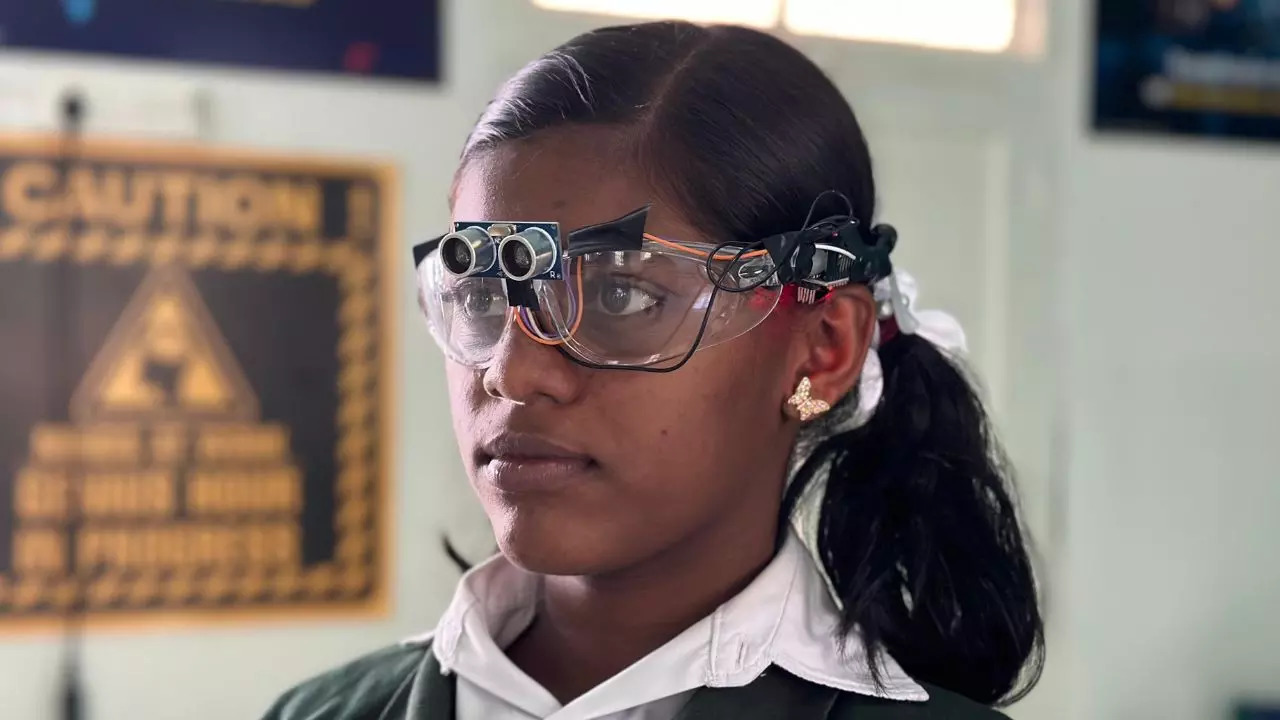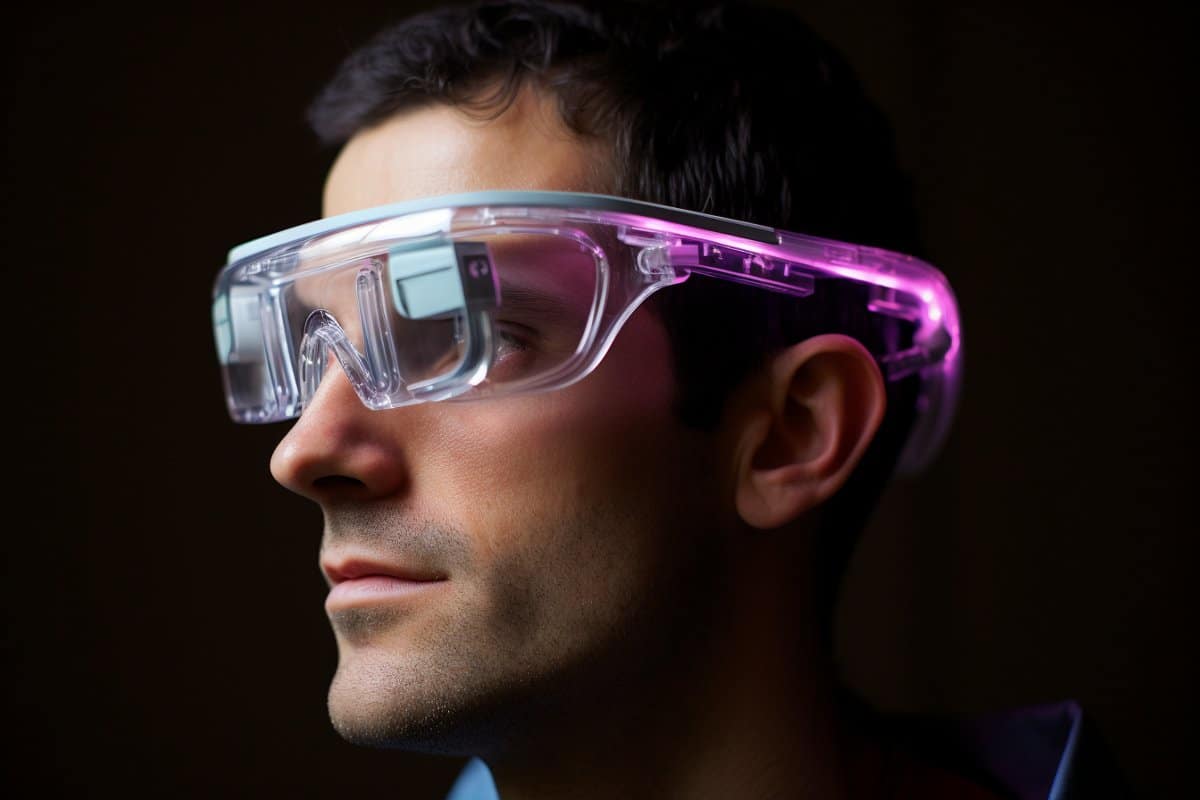Mobility Aids for Visually Impaired Users: Enhancing Independence and Navigation
Mobility Aids for Visually Impaired Users: Enhancing Independence and Navigation
Blog Article
Discover Advanced Assistive Instruments for Individuals With Visual Problems
The landscape of assistive modern technology for individuals with visual problems is advancing rapidly, providing a variety of ingenious devices that improve freedom and interaction (Braille displays and notetakers). From clever glasses that effortlessly combine aesthetic input with auditory guidance to sophisticated navigation applications that redefine spatial awareness, these tools are reshaping opportunities. Furthermore, the most recent innovations in Braille innovation and voice-activated systems significantly add to access. Nonetheless, the implications of these growths expand far past simple performance; they challenge conventional assumptions of handicap and independence. What might this suggest for the future of incorporation and support?
Smart Glasses Innovations
Smart glasses represent a significant development in assistive modern technology for individuals with aesthetic disabilities. Geared up with electronic cameras and sensors, clever glasses can record real-time visual details, which is then processed and conveyed to the customer via sound responses or haptic feelings.
Furthermore, innovations in fabricated knowledge have actually better enhanced the abilities of clever glasses. Machine knowing formulas can recognize faces, read text, and determine things, making them very useful devices for daily jobs. Users can obtain auditory hints that supply context regarding their environment, cultivating freedom and self-confidence.
Furthermore, the ergonomic design and lightweight nature of several clever glasses make them appropriate for long term use, guaranteeing comfort while boosting functionality. As these devices continue to develop, they hold the potential to transform the means individuals with visual impairments experience their lives, linking the space in between accessibility and innovation. The recurring study and development in this field pledge to increase the possibilities for smart glasses, making them a crucial element of modern assistive devices.
Navigating Application and Equipment
Various navigation apps and tools have actually emerged as important sources for individuals with aesthetic problems, significantly enhancing their capability to pass through unknown settings. These technologies leverage GPS performance, audio cues, and real-time data to give customers with specific navigating assistance.
One popular example is the Aira app, which links individuals to qualified agents that can provide aesthetic descriptions of surroundings and navigating guidance through an online video feed. This service boosts the customer's spatial understanding and confidence while navigating. Another noteworthy device is Seeing Eye GPS, which provides voice-guided navigation and factors of passion, making it possible for users to access crucial information regarding their environments.

As modern technology remains to development, the development of more sophisticated navigating tools assures to further encourage individuals with aesthetic problems, helping with seamless mobility and assimilation right into diverse environments. Such technologies contribute in advertising a more comprehensive culture.
Braille Innovation Advancements
Over the last few years, advancements in Braille technology have considerably transformed how people with aesthetic disabilities accessibility details and involve with the globe around them. The growth of portable Braille screens has actually revolutionized analysis by permitting customers to link wirelessly to computer systems, smart devices, and tablets. These gadgets transform message right into Braille in real-time, enabling seamless interaction with electronic web content.
Furthermore, ingenious Braille printers have arised, improving the manufacturing of responsive check here materials. Modern embossers are faster and extra efficient, permitting the rapid development of Braille documents and academic materials. This effectiveness minimizes the time and expense connected with creating Braille sources, making them more accessible to organizations and institutions.
Additionally, the combination of Braille with various other modern technologies, such as expert system and artificial intelligence, has opened new opportunities for tailored understanding experiences. Voice acknowledgment and synthesis innovations can match Braille, offering an inclusive method to info circulation.
As the need for comprehensive education and learning and office settings grows, these technological innovations play a crucial duty in encouraging individuals with aesthetic disabilities, guaranteeing they have equivalent access to details and possibilities in different aspects of life.
Wearable Tools for Self-reliance
A growing selection of wearable gadgets is improving freedom for people with visual problems, supplying cutting-edge remedies that boost navigation and everyday living. Braille displays and notetakers. These devices make use of innovative modern technologies to provide real-time comments and support, promoting freedom in different environments

Wearable technology also includes smartwatches that can be configured with access features, making it possible for customers to get alerts, track their places, or also ask for aid with the touch of a button. Some gadgets include artificial knowledge to assess the setting, offering audio summaries of nearby objects or people.
Voice-Activated Assistive Solutions
Leveraging voice-activated assistive services has actually transformed the landscape of support for individuals with visual impairments, supplying hands-free communication and access to a selection of jobs. These technologies utilize natural language processing and man-made intelligence to allow customers to execute daily activities with straightforward voice commands.

Furthermore, current improvements in voice acknowledgment accuracy have improved the customer experience substantially, fitting diverse accents and speech patterns. This inclusivity comprehensive eye exam makes sure that even more people Read Full Article can gain from these innovations, promoting a greater sense of freedom.
Conclusion
To conclude, the growth of sophisticated assistive gadgets significantly enhances the freedom and lifestyle for people with visual disabilities. Innovations such as clever glasses, navigation applications, Braille technology, wearable devices, and voice-activated solutions collectively promote an even more comprehensive environment. These innovations empower users to navigate their surroundings with confidence and involve more completely with the world, eventually advertising greater availability and level playing fields for individuals facing visual obstacles.
The landscape of assistive technology for people with visual impairments is advancing rapidly, presenting a variety of innovative tools that improve autonomy and involvement.Smart glasses represent a considerable development in assistive innovation for people with aesthetic disabilities. As these tools proceed to advance, they hold the potential to transform the way people with aesthetic impairments experience their day-to-day lives, linking the gap between availability and technology.In current years, developments in Braille innovation have considerably transformed just how individuals with visual impairments access info and engage with the world around them. These innovations encourage customers to browse their surroundings with self-confidence and involve more fully with the world, ultimately advertising greater ease of access and equal possibilities for people facing visual obstacles.
Report this page